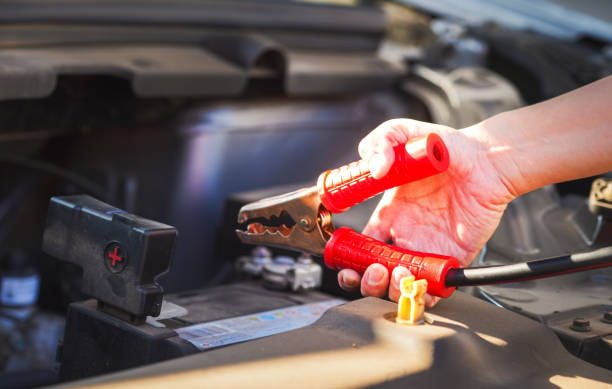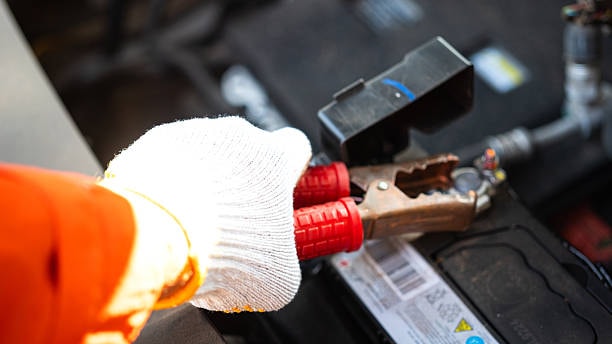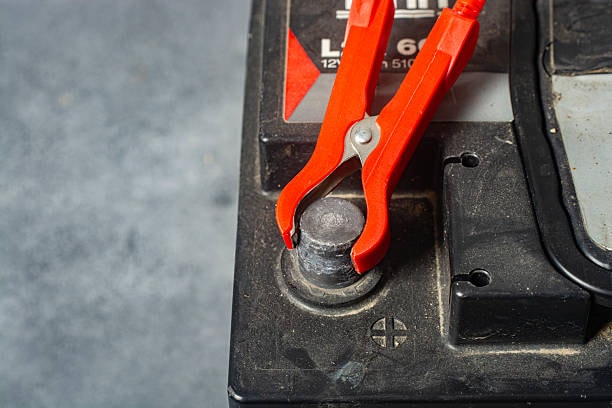
You want to charge a 6-volt battery system with limited access to a 12 volt charger so you seek ways to charge it safely. You risk doing harm to your battery and creating safety risks by charging a 6V battery with 12V power, especially if the battery’s capacity is not sufficient . The correct charging procedures enable us to safely put power into a 6V battery using a 12V source.
Understanding Battery Voltage or volt charger Basics

To safely use a 6 volt battery with a 12V charger or when connecting two batteries together, you must first study battery charging basics. Batteries must stay within their designed voltage ranges because working outside this range creates different damage types.
- A 6V battery needs a charging voltage band from 6.8V to 7.2V while its rated voltage stays at 6 volts.
- A 12V charger produces electric energy between 13.8V and 14.4V during charging operation.
- Connecting double the required voltage to a battery creates overcharge conditions that heat up and risk explosion

Basic laws connect the behavior of electricity with voltage, current, and resistance in Ohm’s Law, including the movement of ions in a battery . A battery with fixed internal resistance receives more electrical power when you raise the voltage applied to it since the charge current matches the new input voltage. Large amounts of current rush through the battery too fast to generate dangerous heat and gas.
Risks of Direct 12V Charging (12 volt charger) on 6V Batteries (6 volt battery)
Connecting 12V powered chargers directly to a 6V battery in series holds multiple serious risks that affect system integrity.
- The battery’s electrolyte solution will overheat and boil when overvoltage occurs which causes fluid loss and may leak harmful acid.
- 12V charger settings that go too fast can bend and deform lead sulfate from thickening inside the battery plates.
- Excessive gas within the battery makes it expand and threatens to crack its housing.
- Battery damage at this stage would cause shorter total battery usage time.
- A sealed battery under intense gas buildup becomes a fire and explosion hazard as the pressure has no way to escape.
This danger grows stronger in batteries that are past their prime or come sealed and maintenance-free, which may also lead to leakage because they cannot absorb extra charging voltages well enough.
Safe Methods for Charging 6V Batteries with 12V Sources
Different safe methods exist to use a 12V charger with a 6V battery although risks persist.
1. 6 volt Voltage Reducer Method
Using a voltage regulator between the 12 volt charger and 6V battery for various applications, including cars, represents the most secure charging method.
- Purchase a DC-DC converter whose primary function is to lower 12V power to 6V
- Search for converters that charge batteries by methods which match the battery chemistry.
- These automotive voltage reducers include features to match their use specifically
- Check if the converter matches or exceeds the needed amperage for battery charging.
High-quality voltage reducers supply proper voltage levels alongside advanced safety protection against common issues when using a 12 volt charger .
2. Resistor Method (For Emergency Use Only)
A power resistor can serve as an emergency replacement tool for lowering the charging circuit voltage and managing discharge .
- Use the calculated resistor value to control charging current flow
- For this method choose a resistor that supports the required power (which generates heat in large amounts)
- Check battery heat levels throughout the charging phase
- This system requires skillful handling and creates safety risks even when performed poorly
When you rely on this method it needs emergency use only and continuous supervision. The resistor produces strong heat and needs enough fresh air to stay cool vehicle.
3. Series Configuration Method – Here, you can hook batteries together.
For those with multiple 6V batteries:
- To build a 12V battery system connect two 6V batteries together in series.
- Connect the 12V charger to charge the series of batteries.
- Remove both batteries from the charger once done and use them separately
You can effectively hook up multiple 6 volt battery-powered equipment using this series jumper method yet must regularly check battery states to maintain proper charge balance.
4. Timed Method (Last Resort)
When you have no other solution available you should take these steps:
- Charge the 12V battery bank with the power supply for no longer than 5 minutes at a time.
- Let the battery rest for 15 to 30 minutes between charging rounds until it returns to normal temperatures
- Check temperature regularly and disconnect your charger when the battery reaches warm temperatures.
- Test your battery voltage using a multimeter and disconnect power at 6.8-7.2V.
You should only try this method when monitoring lead-acid battery electrolyte levels with removable caps.
Specialized Battery Types and Considerations
Preventive procedures differ between battery chemistries to handle voltage problems, especially when the charge is only half .
Lead-Acid Batteries
Standard flooded lead-acid batteries tolerate a bit of short overcharging episodes better than other batteries do.
- Examine and look after electrolyte control before and after charging.
- Leave battery caps unlocked during charging so gasoline can escape safely.
- Charge the battery only outside since lead-acid batteries generate dangerous hydrogen during charging full charge
- Disconnect the charger at once if the battery turns hot or emits an abnormal amount of gas.
AGM and Gel Batteries
AGM and gel batteries need special attention during any operation.
- The sealed batteries contain mechanisms that prevent trapped pressure from escaping easily.
- They need special care because they weaken from excessive charging.
- When charging these battery types use an approved voltage reducer only
- Charging timers should not be used on sealed battery systems.
Lithium and Other Advanced Chemistries
Modern lithium, lithium iron phosphate, or other advanced chemistry 6V batteries can potentially burn if not charged correctly.
- Always rely on designed charging tools to recharge these batteries.
- This battery type needs custom charging instructions.
- High voltage exposure might destroy the battery completely
- Use charging devices made to work with the battery chemistry only fully charged
Long-Term Solutions
Switching to correct charging devices would provide you better choices going forward.
- Get a 6V battery charger made for the purpose
- Invest in a charger that supports multiple output voltages at purchase
- When working with multiple batteries in a system you should move to a standard voltage setup
- When you find more 12V power sources available choose to upgrade your equipment to use 12V power systems trickle charger
Proper charging tools cost much less than fixing battery or equipment harm from charging mistakes.
Conclusion
When you charge a 6V battery with a 12V charger you must take proper safety measures beforehand. Always plug 6V batteries into a 12 volt voltage reducer model or a genuine 6V charging product. Use homemade battery charging methods only if there are immediate safety concerns but always put modern equipment ahead of battery safety considerations.
Batteries hold substantial energy loads that create real danger unless you handle them properly; in fact, even a fine handling can prevent accidents . Using proper charging tools for batteries makes sense as it brings benefits to their life span while enhancing performance and security.
